【vue-router学习】从零开始学习vue-router4.x(四)
这是我基于vue3的进阶学习,学习vue-router以便搭建单页面应用。使用的是js,等练过一遍再改用ts。
前面学的一些还没有做笔记,暂定此随笔为第四章。
路由传参
方式一(query传参)
一个简单的表格,数据为data.json,toDetail函数调用router.push方法,然后使用query传递一个对象(query只能传对象)
<!-- Login.vue -->
<script setup>
import { data } from "./data.json"
import { useRouter } from "vue-router"
const router = useRouter()
const toDetail = (item) => {
router.push({
path: "/reg",
query: item
})
}
</script>
<template>
<div>我是列表页面</div>
<table cellspacing="0" class="table" border="1">
<thead>
<tr>
<th>品牌</th>
<th>价格</th>
<th>操作</th>
</tr>
</thead>
<tbody>
<tr :key="item.id" v-for="item in data">
<th>{{ item.name }}</th>
<th>{{ item.price }}</th>
<th>
<button @click="toDetail(item)">详情</button>
</th>
</tr>
</tbody>
</table>
</template>
// data.json
{
"data": [
{
"name": "老坛酸菜",
"price": 500,
"id": 1
},
{
"name": "火腿肠",
"price": 800,
"id": 2
},
{
"name": "翡翠玉石",
"price": 80000,
"id": 3
}
]
} 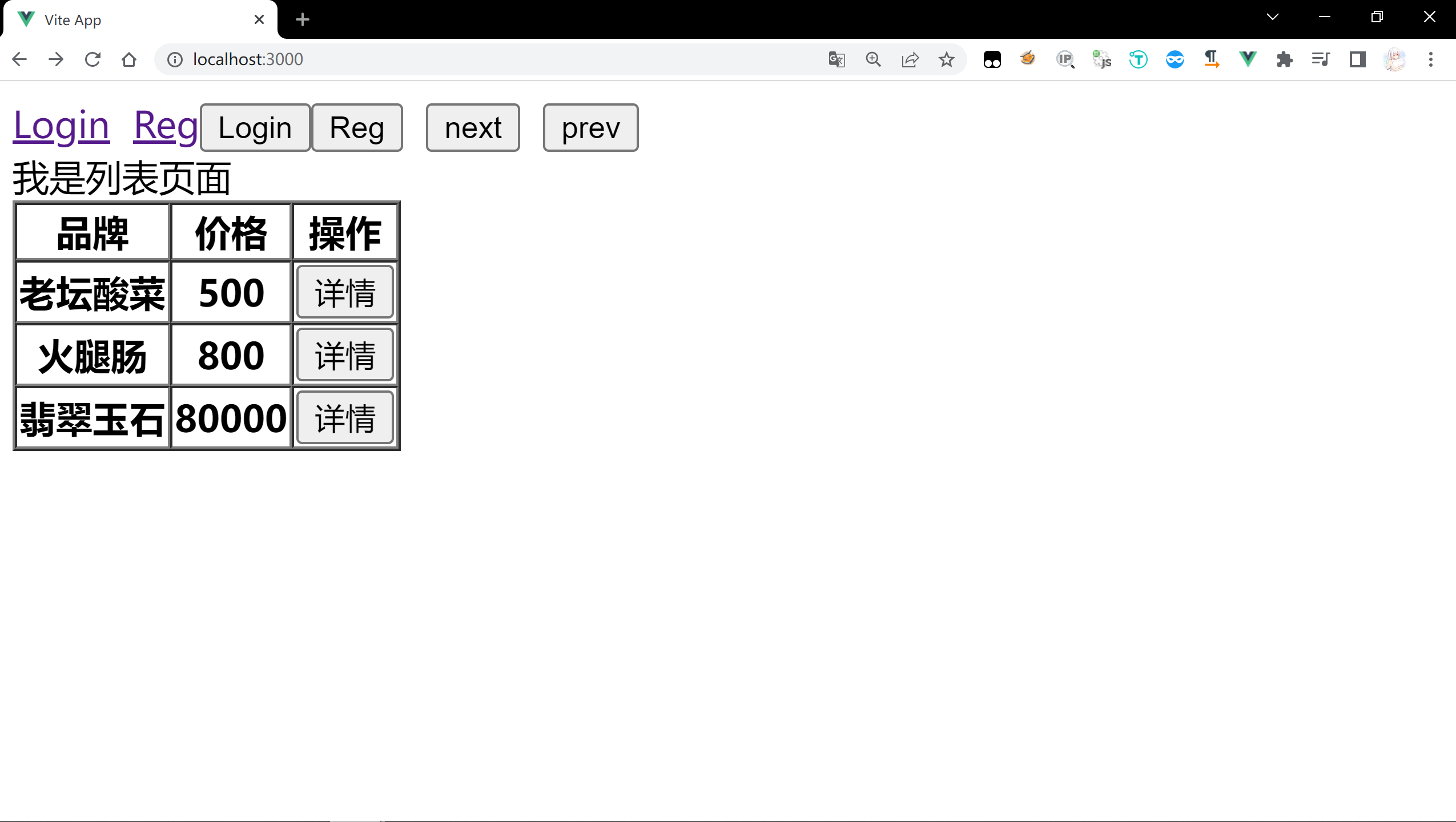
参数接收页面,使用route接收参数,并将参数展示出来
<!-- Reg.vue -->
<script setup>
import { useRoute,useRouter } from "vue-router"
const route = useRoute()
const router = useRouter()
</script>
<template>
<button @click="router.back">返回</button>
<div>品牌:{{route.query.name}}</div>
<div>价格:{{route.query.price}}</div>
<div>ID:{{route.query.id}}</div>
</template> 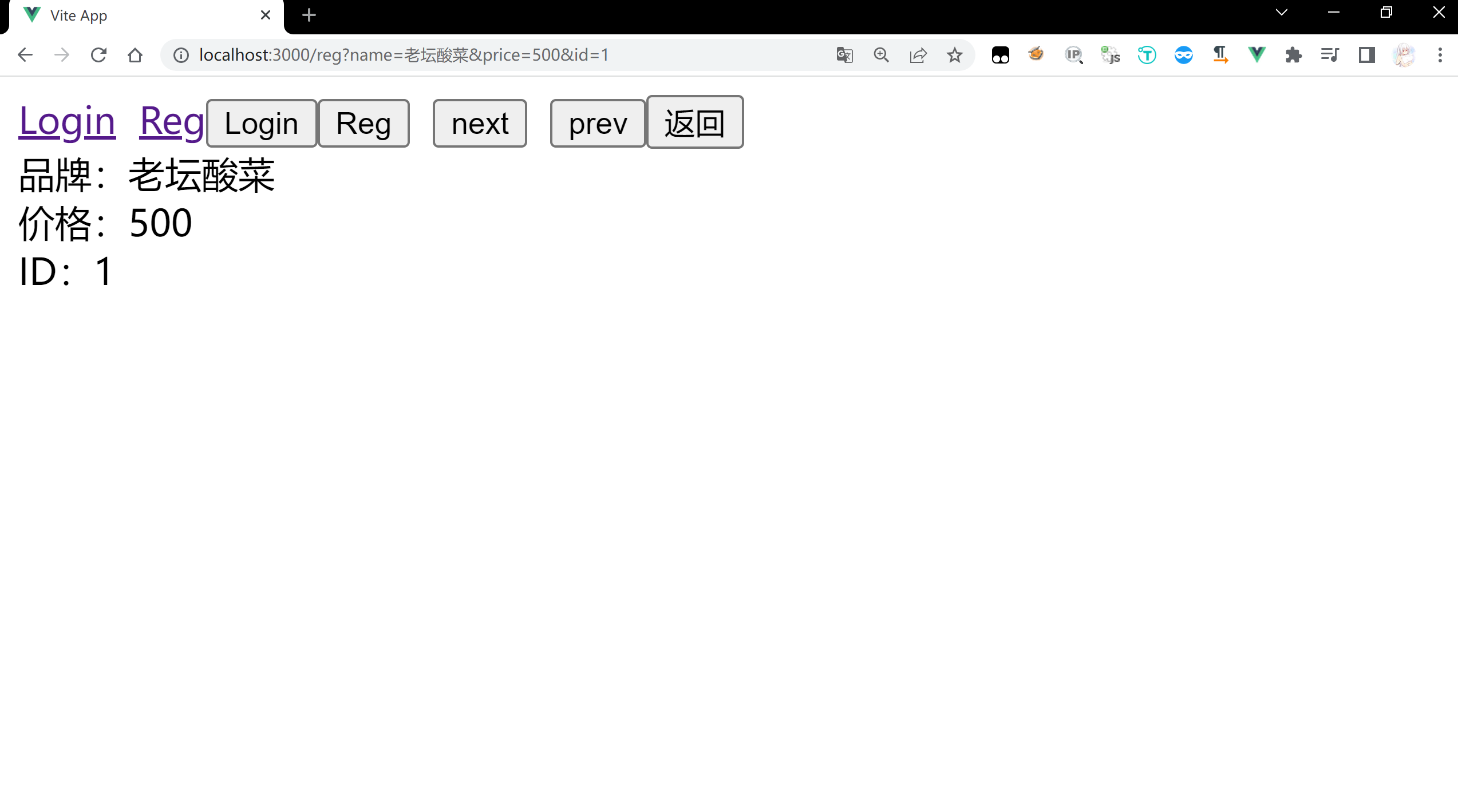
方式二(params传参)
- params传参不能使用path,只能用name。
- params传参是存在内存中的,所以不会在url上显示,且刷新页面参数会消失
路由配置
import { createRouter,createWebHistory } from 'vue-router'
const routes = [
{
path: "/",
name: "Login",
component: ()=>import("../components/Login.vue")
},
{
path: "/reg",
name: "Reg",
component: ()=>import("../components/Reg.vue")
}
]
const router = createRouter({
history: createWebHistory(),
routes
})
export default router页面代码
<!-- Login.vue -->
<script setup>
import { data } from "./data.json"
import { useRouter } from "vue-router"
const router = useRouter()
const toDetail = (item) => {
router.push({
name: "Reg",
params: item
})
}
</script>
<template>
<div>我是列表页面</div>
<table cellspacing="0" class="table" border="1">
<thead>
<tr>
<th>品牌</th>
<th>价格</th>
<th>操作</th>
</tr>
</thead>
<tbody>
<tr :key="item.id" v-for="item in data">
<th>{{ item.name }}</th>
<th>{{ item.price }}</th>
<th>
<button @click="toDetail(item)">详情</button>
</th>
</tr>
</tbody>
</table>
</template>
<!-- Reg.vue -->
<script setup>
import { useRoute,useRouter } from "vue-router"
const route = useRoute()
const router = useRouter()
</script>
<template>
<button @click="router.back">返回</button>
<div>品牌:{{route.params.name}}</div>
<div>价格:{{route.params.price}}</div>
<div>ID:{{route.params.id}}</div>
</template><!-- App.vue -->
<script setup>
import Caculator from './components/Caculator.vue'
import { useRouter } from 'vue-router'
const router = useRouter()
const toPage = (url) => {
router.push(url)
}
const prev = () => {
router.back()
}
const next = () => {
router.go(1)
}
</script>
<template>
<div>
<router-link replace to="/">Login</router-link>
<router-link replace style="margin-left: 10px;" to="/reg">Reg</router-link>
<button @click="toPage('/')">Login</button>
<button @click="toPage('/reg')">Reg</button>
<button @click="next()" style="margin-left: 10px;">next</button>
<button @click="prev()" style="margin-left: 10px;">prev</button>
<router-view></router-view>
</div>
</template>
<style>
</style>效果
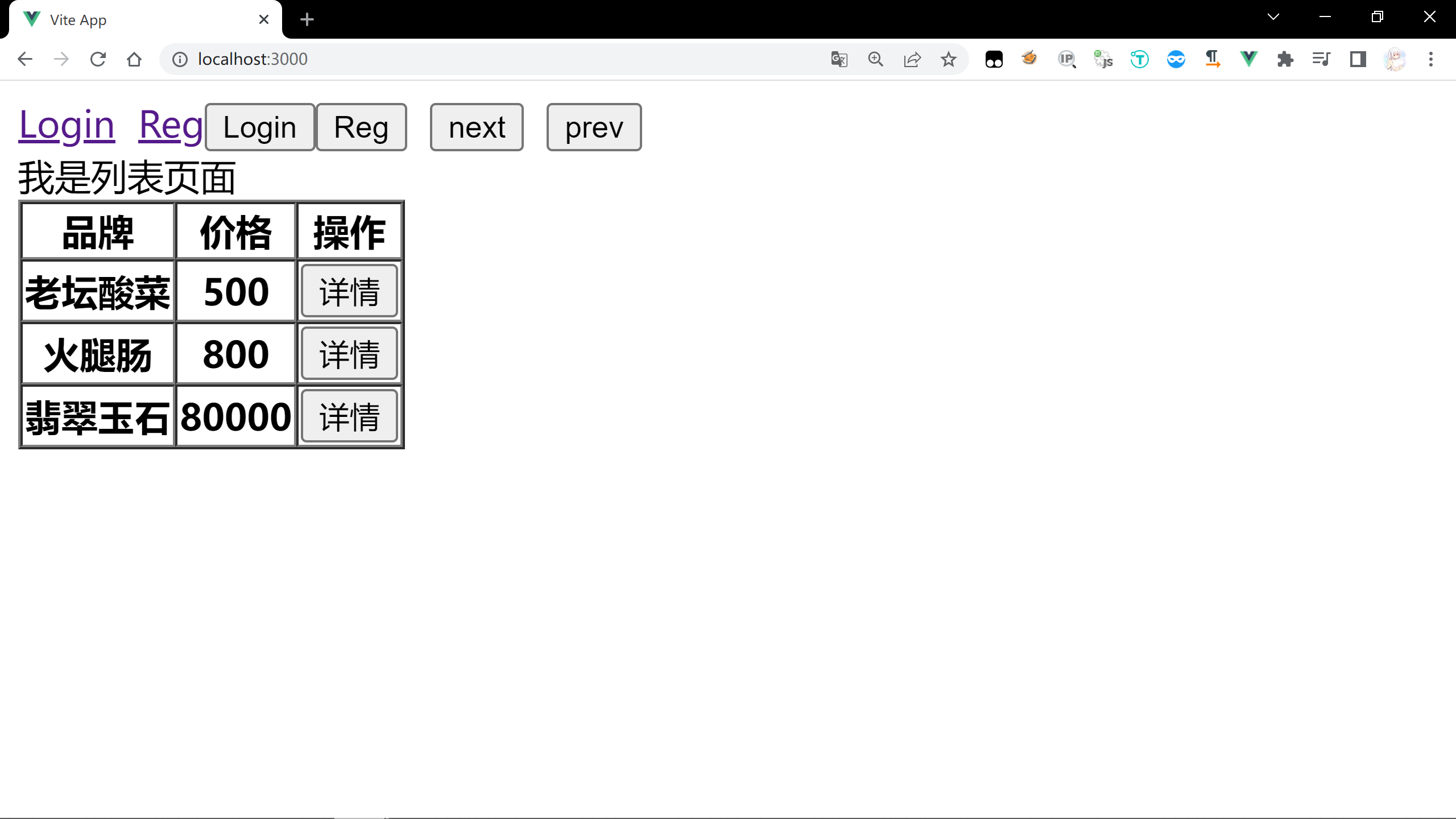
url并没有参数
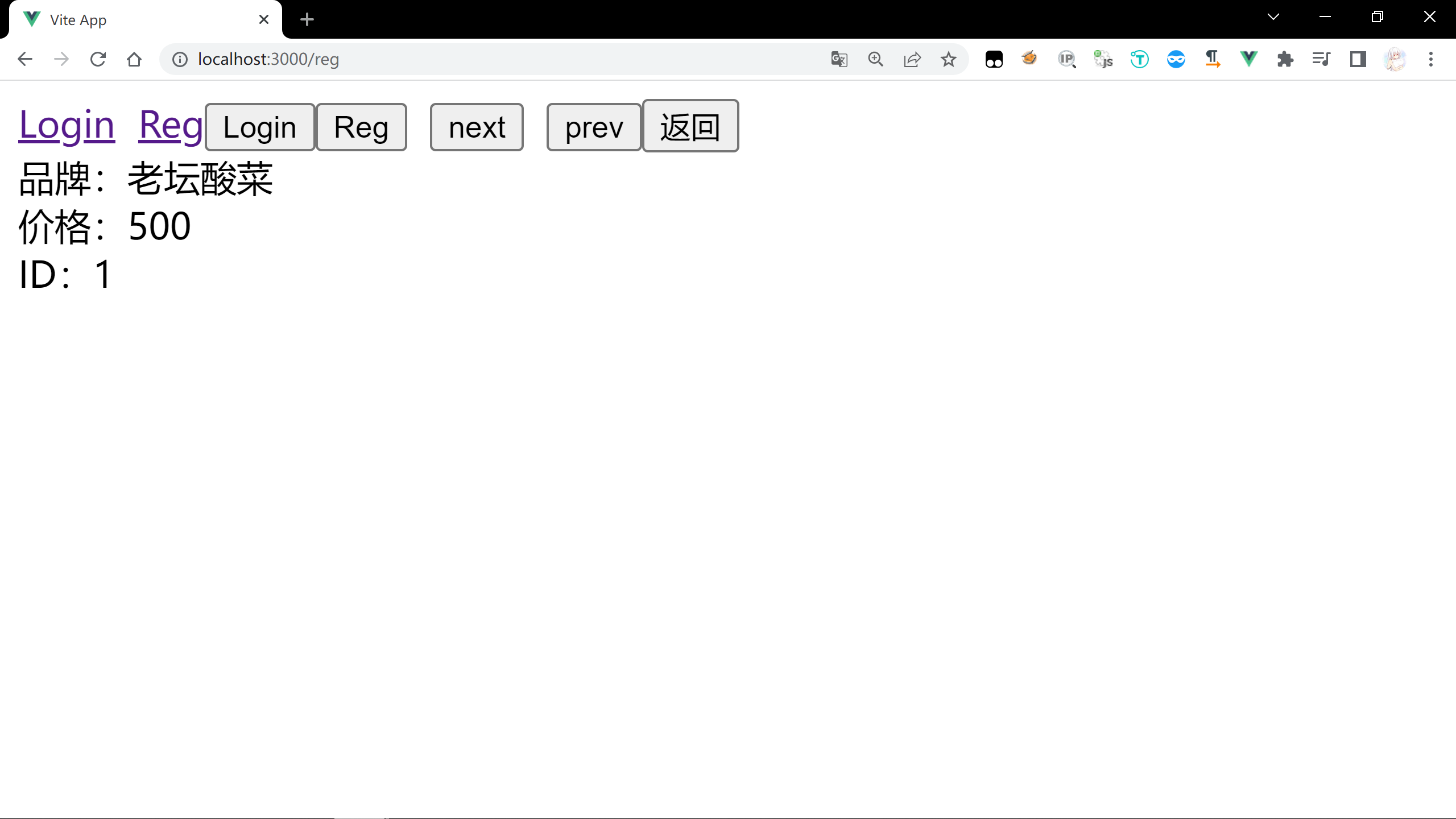
刷新一下,参数消失
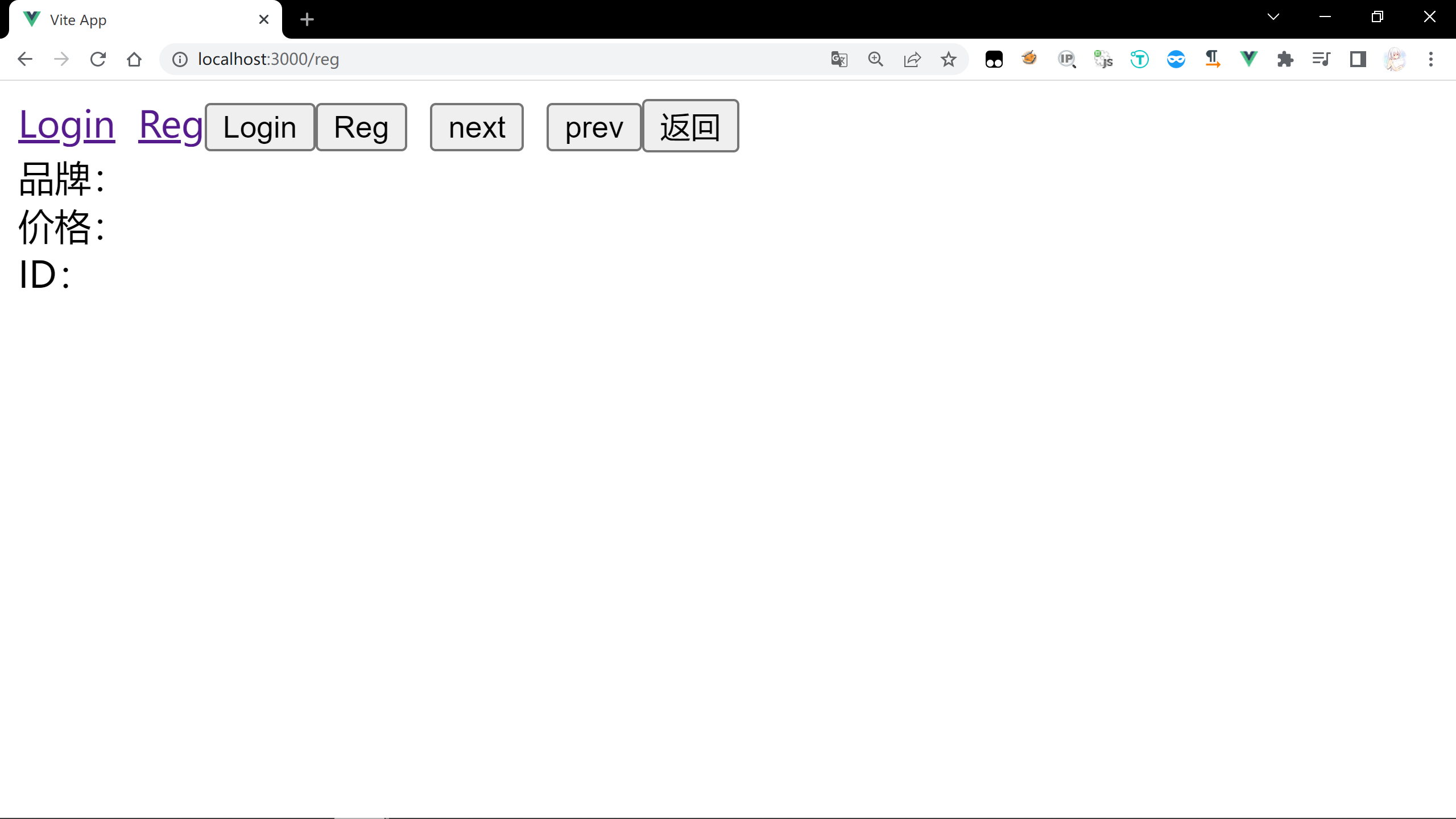
方式三(动态路由参数)
代码
在方式二的基础基础上进行改进,使得刷新不会丢失内容。
修改Reg.vue,使用data.find进行查找。
由于item可能为空所以要使用?。
<!-- Reg.vue -->
<script setup>
import { data } from "./data.json"
import { useRoute,useRouter } from "vue-router"
const route = useRoute()
const router = useRouter()
const item = data.find(v => v.id == route.params.id)
</script>
<template>
<button @click="router.back">返回</button>
<div>品牌:{{item?.name}}</div>
<div>价格:{{item?.price}}</div>
<div>ID:{{item?.id}}</div>
</template>效果
刷新后数据没有丢失
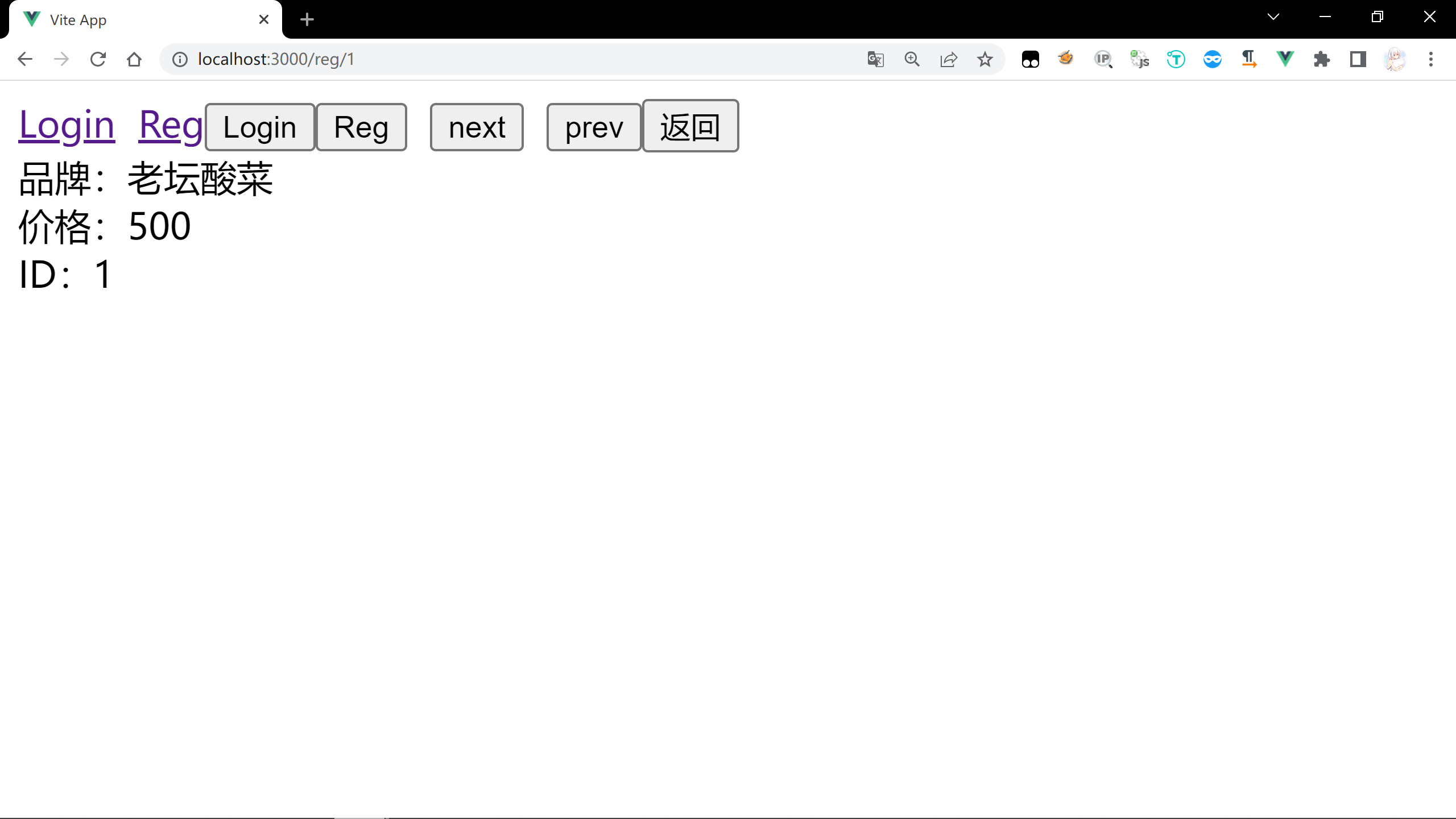


 浙公网安备 33010602011771号
浙公网安备 33010602011771号